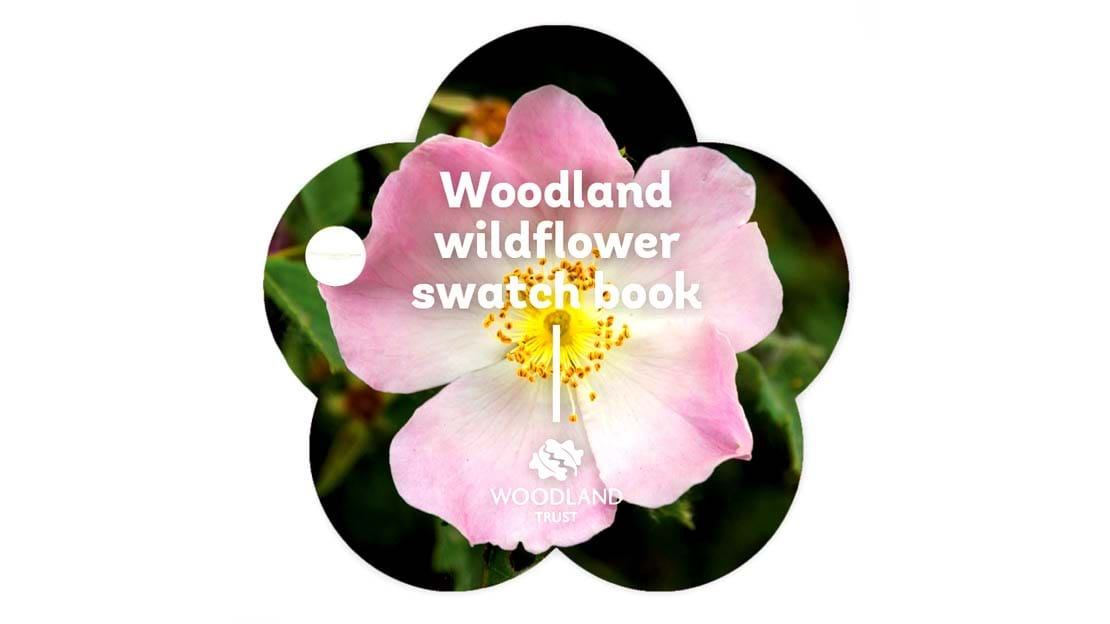
Identify wildflowers on the go
Discover wildflowers when you're out and about with your mini pocket guide to the UK's common woodland plants.
Visit our shopEnchanting and iconic, bluebells are a favourite with the fairies and a sure sign spring is in full swing. The violet glow of a bluebell wood is an incredible wildflower spectacle.
Common names: bluebell, English bluebell, British bluebell, English harebell, wild hyacinth, cuckoo’s boots, granfer griggles, witches’ thimbles, lady’s nightcap, fairy flower, cra’tae (crow’s toes)
Scientific name: Hyacinthoides non-scripta
Family: Asparagaceae
Origin: native
Flowering season: mid-April to late May
Habitat: broadleaf woodland, fields, along hedgerows
Bluebells are unmistakable bell-shaped perennial herbs. They actually spend the majority of their time underground as bulbs, emerging, often in droves, to flower from April onwards.
Leaves: are narrow, around 7mm to 25mm wide and 45cm in length. They are strap-shaped, smooth and hairless, with a pointed tip.
Flowers: usually deep violet-blue in colour, bluebells are bell-shaped with six petals and up-turned tips. These sweet-smelling flowers nod or droop to one side of the flowering stem (known as an inflorescence) and have creamy white-coloured pollen inside. Some bluebell flowers can be white or pink. Up to 20 flowers can grow on one inflorescence.
Not to be confused with: Spanish bluebell (Hyacinthoides hispanica), which is very similar in appearance to the British bluebell. However, Spanish bluebells grow upright, with the flowers all around the stem, not drooping to one side like the British bluebell. Hybrid bluebell (Hyacinthoides x massartiana) is a mix of the British and Spanish bluebell. It is often very similar in appearance to our native bluebell, but might threaten its existence by out-competing it and diluting the gene pool.

Discover wildflowers when you're out and about with your mini pocket guide to the UK's common woodland plants.
Visit our shop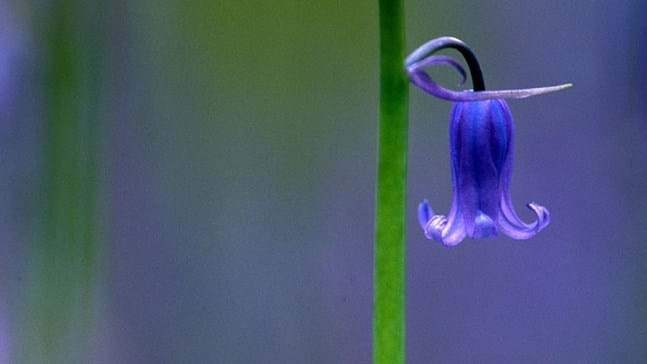
Credit: Richard Becker / WTML
Bluebells are native to western Europe with the UK being a species stronghold. They're associated with ancient woodland and are often used in combination with other species as a clue that a wood is ancient. They reach their greatest densities in the UK’s woods where many thousands of bulbs can exist in one woodland, creating the incredible blue carpets we fondly associate with spring. They also grow along hedgerows and in fields.
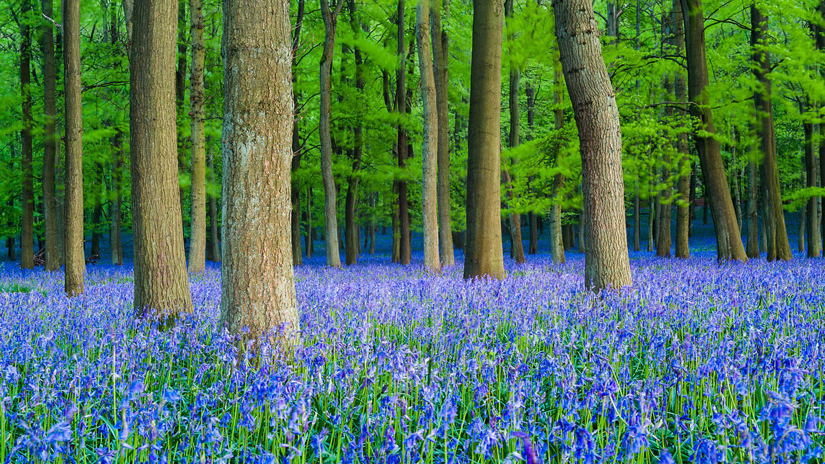
See a stunning sea of blue! Discover some of the most beautiful bluebell displays around the country.
Best bluebell woods
Credit: Alecowenevans / iStockPhoto.com
Many insects reap the benefits of bluebells which flower earlier than many other plants. Woodland butterflies, bees and hoverflies all feed on their nectar. Bees can ‘steal’ the nectar from bluebells by biting a hole in the bottom of the flower, reaching the nectar without the need to pollinate the flower.
Bluebells can reproduce sexually by seed or asexually by natural vegetative propagation.
Some flowers have held symbolic meanings for centuries. This is known as the language of flowers, or floriography and was really popular during Victorian times. It’s a form of coded communication where each flower has its own special meaning.
There are countless folklore tales surrounding bluebells, many of which involve dark fairy magic. Bluebell woods are believed to be intricately woven with fairy enchantments, used by these mischievous beings to trap humans. It is also said that if you hear a bluebell ring, you will be visited by a bad fairy, and will die not long after. If you are to pick a bluebell, many believe you will be led astray by fairies, wandering lost forevermore.
In the language of flowers, the bluebell is a symbol of humility, constancy, gratitude and everlasting love. It is said that if you turn a bluebell flower inside-out without tearing it, you will win the one you love, and if you wear a wreath of bluebells you will only be able to speak the truth.

Credit: Richard Lay / WTML
Bluebells have been used for a variety of different things throughout history, not just for ornamental purposes. Their sticky sap was once used to bind the pages of books and glue the feathers onto arrows, and during the Elizabethan period, their bulbs were crushed to make starch for the ruffs of collars and sleeves. Due to their toxicity, there has been little use for bluebells in modern medicine. However, their bulbs have diuretic (increases urination) and styptic (helps to stop bleeding) properties, and research on how these flowers could potentially help fight cancer is ongoing.
This species is a slow grower, taking at least five years for a seed to develop into a bulb.
While the bluebell is still common throughout Britain, it is under threat locally from habitat destruction, hybridisation with non-native bluebells and the illegal trade of wild-collected bulbs. Bluebells can take years to recover from the damage caused by trampling, and if their leaves are crushed they can be weakened (as they can no longer photosynthesise).
The bluebell is protected under the Wildlife and Countryside Act (1981). This means digging up the plant or bulb in the countryside is prohibited and landowners are prohibited from removing bluebells from their land to sell. The species was also listed on Schedule 8 of the Act in 1998, which makes trading in wild bluebell bulbs and seeds an offence. This legislation was designed to protect bluebell from unscrupulous bulb collectors who supply garden centres.
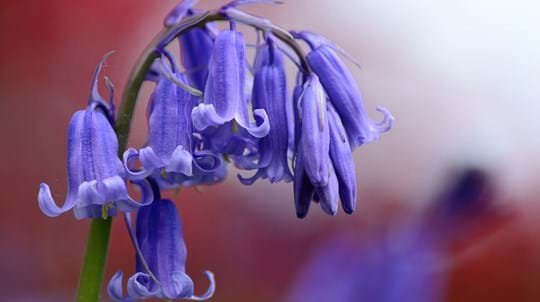
Trees woods and wildlife
Bluebell is an ancient-woodland-indicator plant. If you spot it while you're out exploring, it could be a sign you're standing in a rare and special habitat.
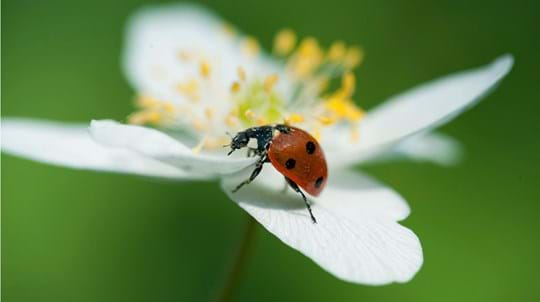
Nature's Calendar
Have you seen the first ladybird of the year or the last swallow of summer? Tell us about the nature near you and help scientists track the effects of climate change on wildlife.
External link